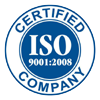How is Biogas Purified from Raw Gas to Clean Energy?
- You are here:
- Home /
- Uncategorized /
- How is Biogas Purified from Raw Gas to Clean Energy?
To use biogas to its full potential, it needs to be purified. There are various technologies and methods that are used for biogas purification today. Purified biogas has several use cases, such as cooking, lighting, transportation, and power generation. The process has two advantages: first, it recycles organic waste into fertiliser, and second, it creates renewable energy.
In this blog, we are going to explain what impurities biogas has and the various techniques used to purify it.
Raw biogas is mainly made up of methane and carbon dioxide. Other gases usually found in raw biogas are: water vapour, nitrogen, oxygen, hydrogen, and trace compounds of hydrogen sulfide, ammonia, and siloxanes. The mix depends on various aspects like what you feed it, pressure, and pH.
Raw biogas has several impurities that need to be removed in order to use it. One of the biggest impurities is hydrogen sulfide. Another big problem is siloxanes; they are especially found in biogas from water treatment plants. Some of the other unwanted substances are ammonia, halocarbons, water vapour, and volatile organic compounds.
Biogas purification is also sometimes known as biogas upgradation. The process mainly depends on how well you can separate its components.
The water scrubbing process starts when pressurised biogas (usually 8-10 bars) enters the bottom of a packed column. After this, when water flows down from the top, and creates a counter-current absorption system. As a result, CO₂ dissolves into the water, which lets methane rise to the top much purer than before.
The PSA process involves using porous materials that catch carbon dioxide to purify biogas. It begins with pressure build-up, then the carbon dioxide sticks to the material (known as adsorption). After this, depressurisation occurs and regeneration of the adsorption media.
The amine absorption method uses a chemical reaction instead of any physical properties, like other processes. It uses amine solutions because it forms chemical bonds with carbon dioxide. The solution is heated to a high temperature to release the carbon dioxide.
Cryogenic separation uses temperature differences to separate gases by turning them into liquids. When biogas is cooled to very low temperatures, it creates two important products: very pure biomethane and liquid carbon dioxide.
Hydrogenotrophic methanogens are microorganisms that convert carbon dioxide and hydrogen into methane through biological methanation. Through this process, biomethane with 96% purity is produced.
In this process, the high-pressure biogas meets the membrane surface, and the carbon dioxide passes through. As a result, biogas is purified by removing carbon dioxide.
Pure biogas is a very valuable energy source that is also clean. It is used in many industries after going through a biogas upgrading process.
 Certified Company
Certified Company